Cover crops are commonly used in both backyard gardens and larger crop fields to make soils more fertile and improve soil health and structure. Fast-growing and resilient cover crops are generally sown in autumn after your vegetables are harvested for the season, but they can also be planted in spring. Once cover crops are killed by winter frost, they can be worked into the soil, where they serve as a “green manure,” contributing nutrients to the earth and countering soil compaction.
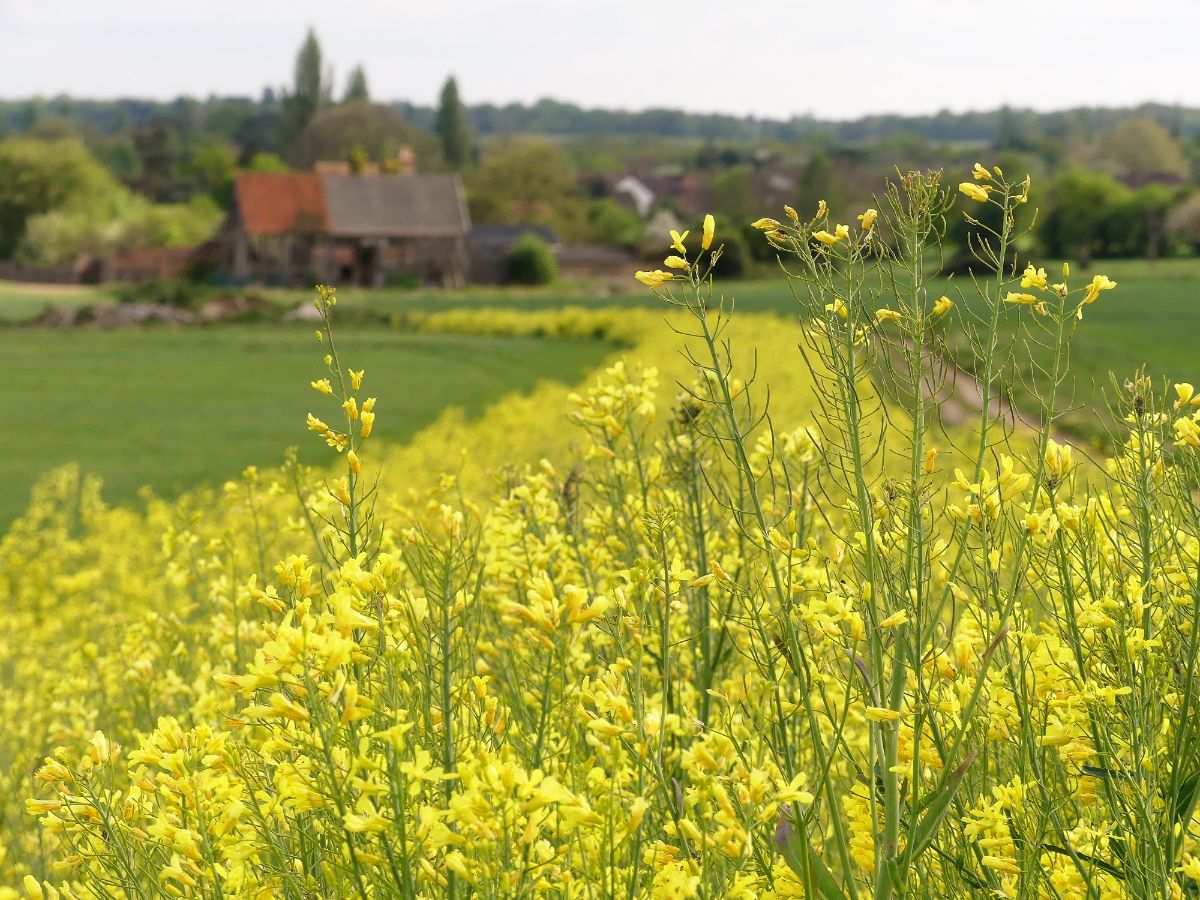
Beyond improving the health of the soil, cover crops can also be used for weed suppression, pest control, erosion control, and more. But certain cover crops are better than others for particular gardens and growing zones. In this guide, you’ll discover the best cover crops on the market and learn how to use each of these crop types in your backyard garden.
Jump to:
- 15 best cover crops to enhance soil health and reduce weeds
- 1. Forage radish (Raphanus sativus)
- 2. Annual ryegrass (Lolium multiflorum)
- 3. Field peas (Pisum sativum)
- 4. Sorghum (Sorghum bicolor)
- 5. Buckwheat (Fagopyrum esculentum)
- 6. Crimson clover (Trifolium incarnatum)
- 7. Canola (Brassica napus)
- 8. Vetch (Vicia villosa)
- 9. Rye (Secale cereale)
- 10. Alfalfa (Medicago sativa)
- 11. Mustard (Brassica juncea)
- 12. Fava beans (Vicia faba)
- 13. Arugula (Eruca sativa)
- 14. Oats (Avena sativa)
- 15. Barley (Hordeum vulgare)
- Frequently asked questions
- Summary
15 best cover crops to enhance soil health and reduce weeds

Some cover crops can survive the winter in certain areas, while other “winter kill” cover crops won’t come back in the spring, no matter what. Cover crops can also contribute different nutrients to the soil, and they may have different sowing times too. Understanding the specific attributes of each type of cover crop will help you choose the right crops for your garden beds.
1. Forage radish (Raphanus sativus)
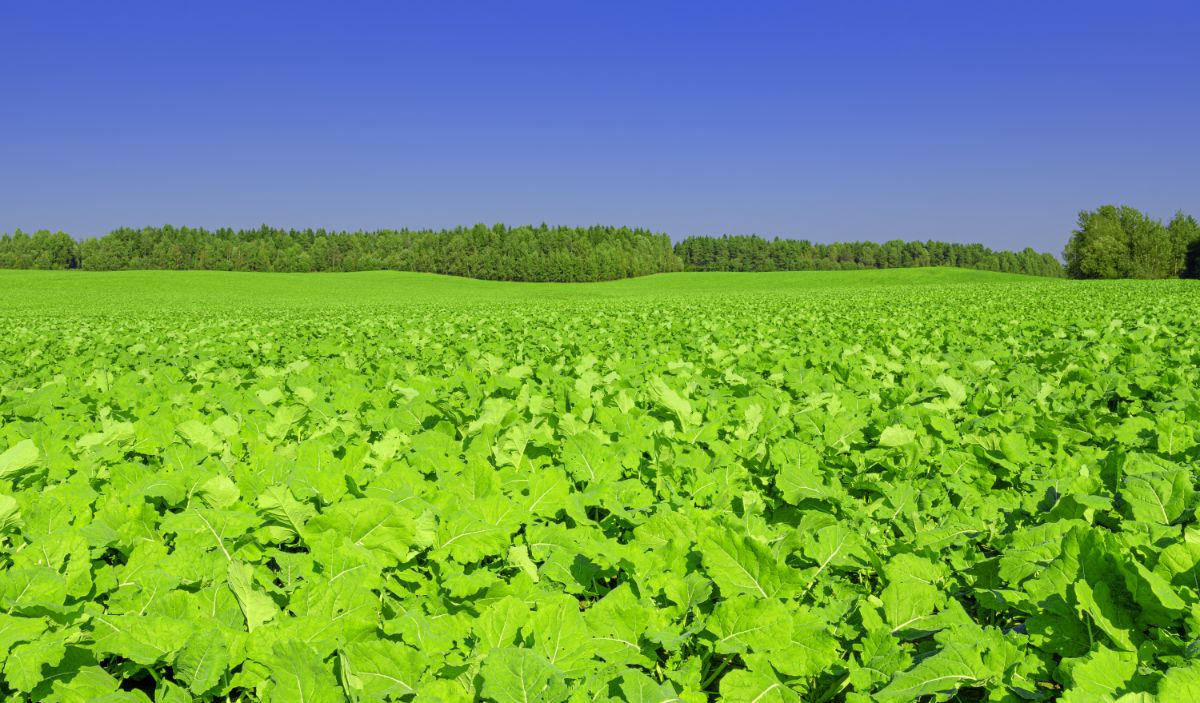
| Plant name: | Forage radish |
| Light requirements: | Full sun to part shade |
| Water requirements: | Moderate |
| Winter killed? | Yes |
| Planting time? | 3 – 10 weeks before the first frost date |
Also known as daikons, forage radishes are one of the best cover crops to grow because they do so much for garden beds. Daikons are, of course, edible, so you can certainly sample some of your cover crops as they’re maturing in your garden. However, you’ll want to leave most of your forage radishes in place through the winter to get the most benefits out of this impressive green manure.
As they grow, daikon plants produce long tap roots, which break up tough, clay soils and help water penetrate the earth better. This is useful as it will make your garden more hospitable to vegetable plants, and the soil will be much easier for plant roots to navigate in the future. When tilled into the soil, forage radishes also contribute nutrients to your garden, and they can prevent weeds from creeping into your beds as well!
For best results, sow forage radish seeds in your garden in late summer to early fall and then allow the plants to be killed off by the winter frost. In spring, till the remaining plant debris back into your soil and watch how your veggies flourish thanks to all those new soil nutrients!
2. Annual ryegrass (Lolium multiflorum)

| Plant name: | Annual ryegrass |
| Light requirements: | Full sun |
| Water requirements: | Moderate |
| Winter killed? | No |
| Planting time? | Spring or mid-August to the end of September |
Annual ryegrass is one of the most popular cover crops to grow in large part because it’s just so easy to plant. A true “sow and grow” type cover crop, annual ryegrass sprouts readily in spring or late summer to fall. This plant doesn’t do well in heat, though, and it often dies back in summer.
Annual ryegrass can sometimes survive the winter, so you will need to be vigilant about plowing this cover crop under before it goes to seed to keep it from becoming weedy. While annual rye grass will contribute nutrients to the soil when it’s tilled in, this plant is also ideal for erosion control and weed suppression. If you needed more reasons to give annual ryegrass a go, this plant also has a large root system that breaks up tough soils and counters soil compaction.
3. Field peas (Pisum sativum)
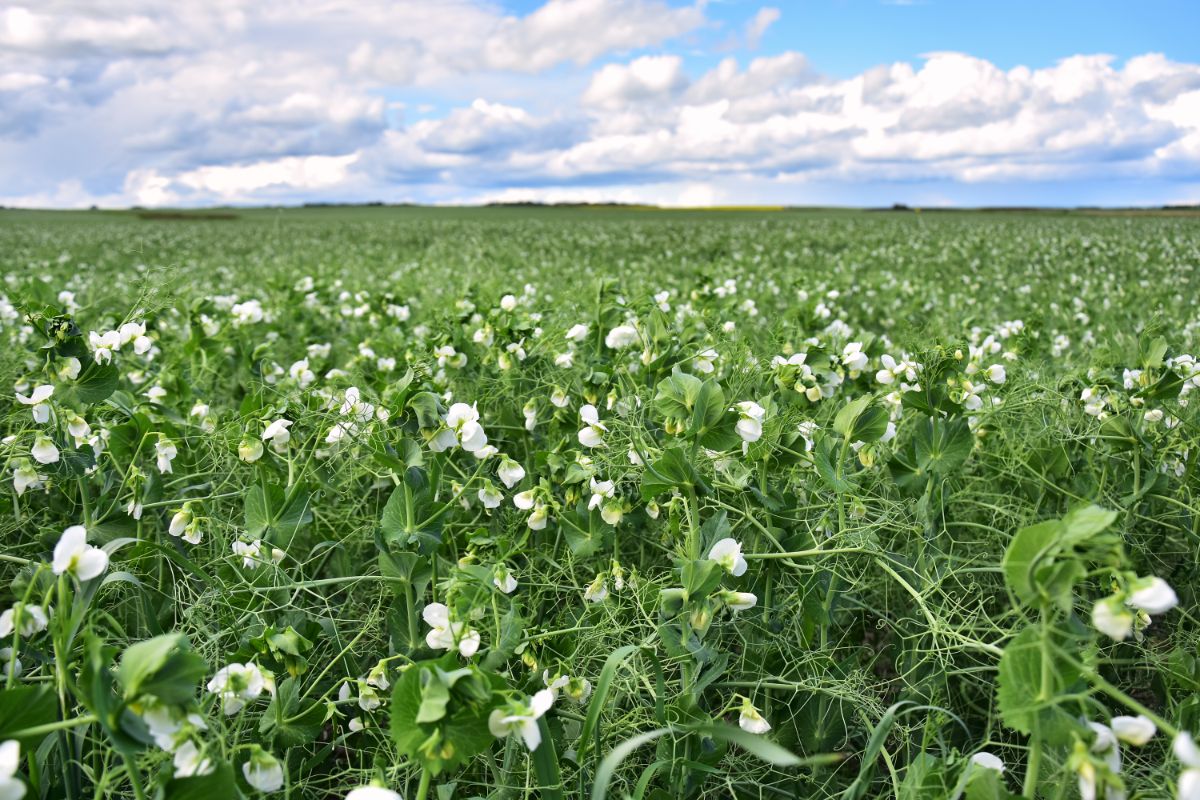
| Plant name: | Field peas |
| Light requirements: | Full sun |
| Water requirements: | Moderate |
| Winter killed? | Yes |
| Planting time? | Early spring or late summer to early fall |
Field peas are a fast-growing, legume crop that can contribute a lot of biomass to your garden and enrich your soil with lots of nitrogen. But if you want to get the most benefit out of your field peas, they will need to be sown early enough in the season that can get a lot of growth in before they’re tilled into the soil. Field peas can be used as a cover crop in both spring and autumn, but for fall plantings, make sure you get your seeds planted in late summer to early fall.
In addition to contributing nitrogen, field peas enhance the structure of garden soils, and they improve soil friability. That means that if your soil is dry and crumbly, using field peas as a cover crop may help! When planted with other cover crops, like rye or oats, field peas can also provide excellent weed suppression and erosion control.
4. Sorghum (Sorghum bicolor)
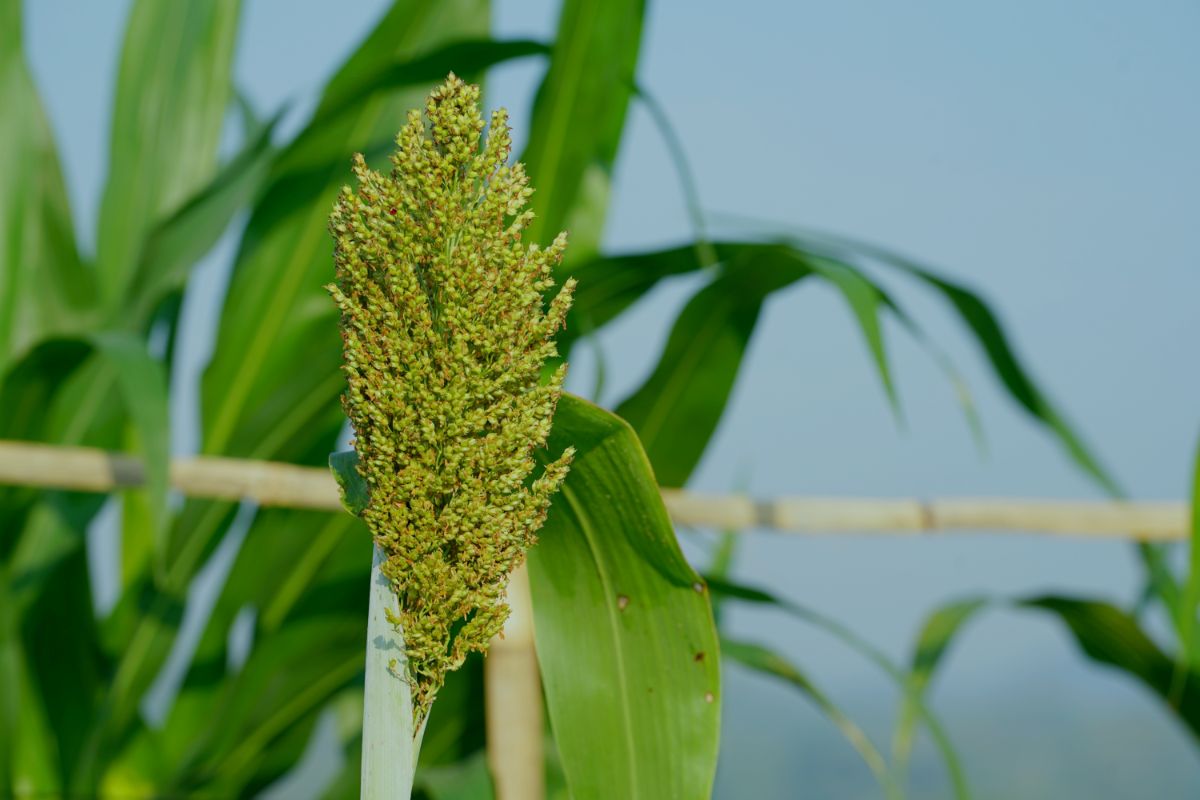
| Plant name: | Sorghum |
| Light requirements: | Full sun |
| Water requirements: | Moderate |
| Winter killed? | Yes |
| Planting time? | July to mid-August |
Sorghum plants produce edible grains, but some varieties, like broomcorn sorghum, are highly ornamental, and they’re often grown for autumn décor. Of course, these fast-growing plants also make top-notch cover crops, and when tilled into the soil, they make a nutrient-rich green manure that improves soil structures too. Best of all, sorghum is a winter-killed cover crop, which means you won’t need to worry about it spreading all over the place!
While sorghum cover crops can do a lot to improve soil quality, their tall height also helps them overshadow weeds and prevent beds from becoming weedy. When killed in winter, sorghum plants make a thick and natural mulch that will shelter your soil from harsh winter winds and keep weed seeds from creeping in as well. Plus, sorghum grows beautifully with other cover crops, and its sturdy stems can even provide support for rambling cover crops like vetch and field peas.
Finally, while brassica-type cover crops are mostly grown for their biofumigation properties (more on that soon!), sorghum is also known as a biofumigant. Specifically, sorghum has shown promise for suppressing soil-dwelling pests, including parasitic nematodes.
5. Buckwheat (Fagopyrum esculentum)
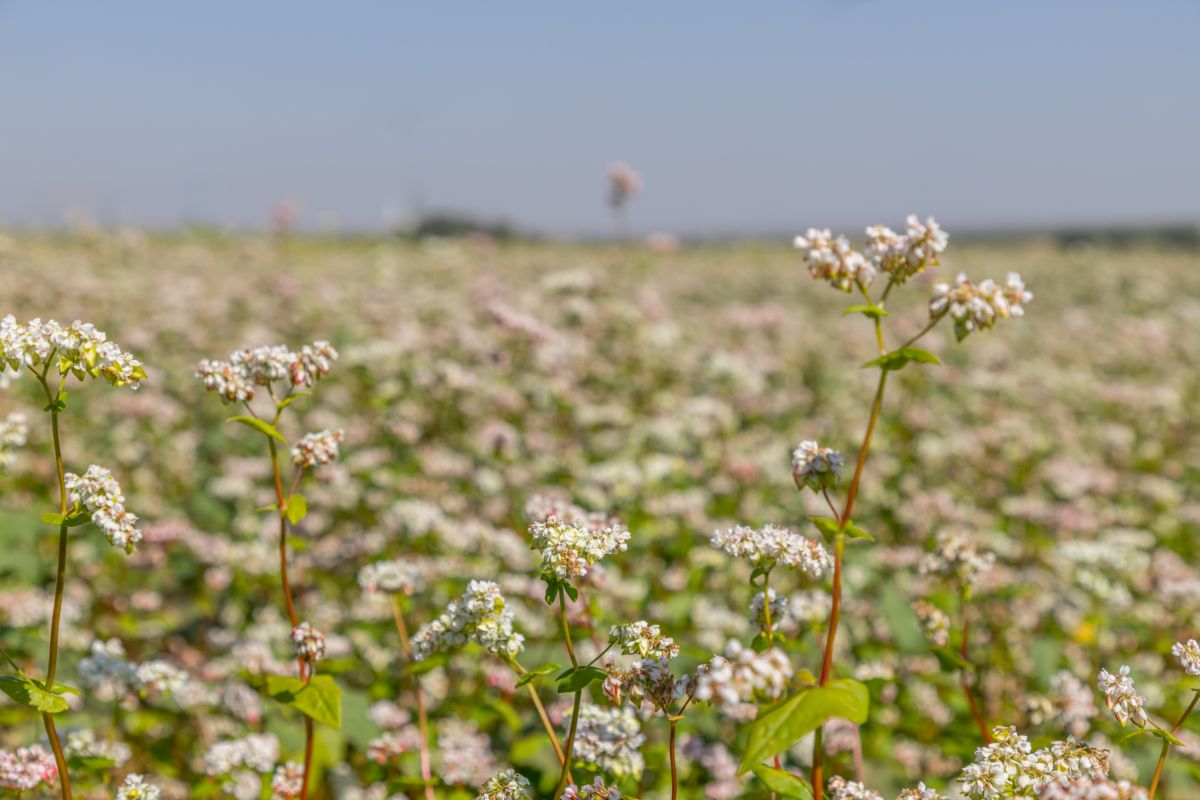
| Plant name: | Buckwheat |
| Light requirements: | Full sun |
| Water requirements: | Moderate |
| Winter killed? | Yes |
| Planting time? | Spring or June to July |
While the seed heads of buckwheat plants yield a grain that can be used like wheat, buckwheat is actually related to rhubarb. This stout and fast-growing cover crop shields soils and helps prevent weeds from sprouting. When tilled into the earth, buckwheat also enhances soil structure and nutrient content.
Buckwheat is a top cover crop for a number of different reasons, but it’s particularly good at fixing nutrients in the soil. If your soil is deficient in calcium or phosphorus, buckwheat is a good plant to try, as it can fix these two nutrients, as well as nitrogen, in your garden.
While buckwheat cover crops can be planted in spring, you can also sow them in late summer and early fall. When cold weather arrives, buckwheat plants will die back and form a neat mulch for weed suppression, soil protection, and erosion control.
6. Crimson clover (Trifolium incarnatum)
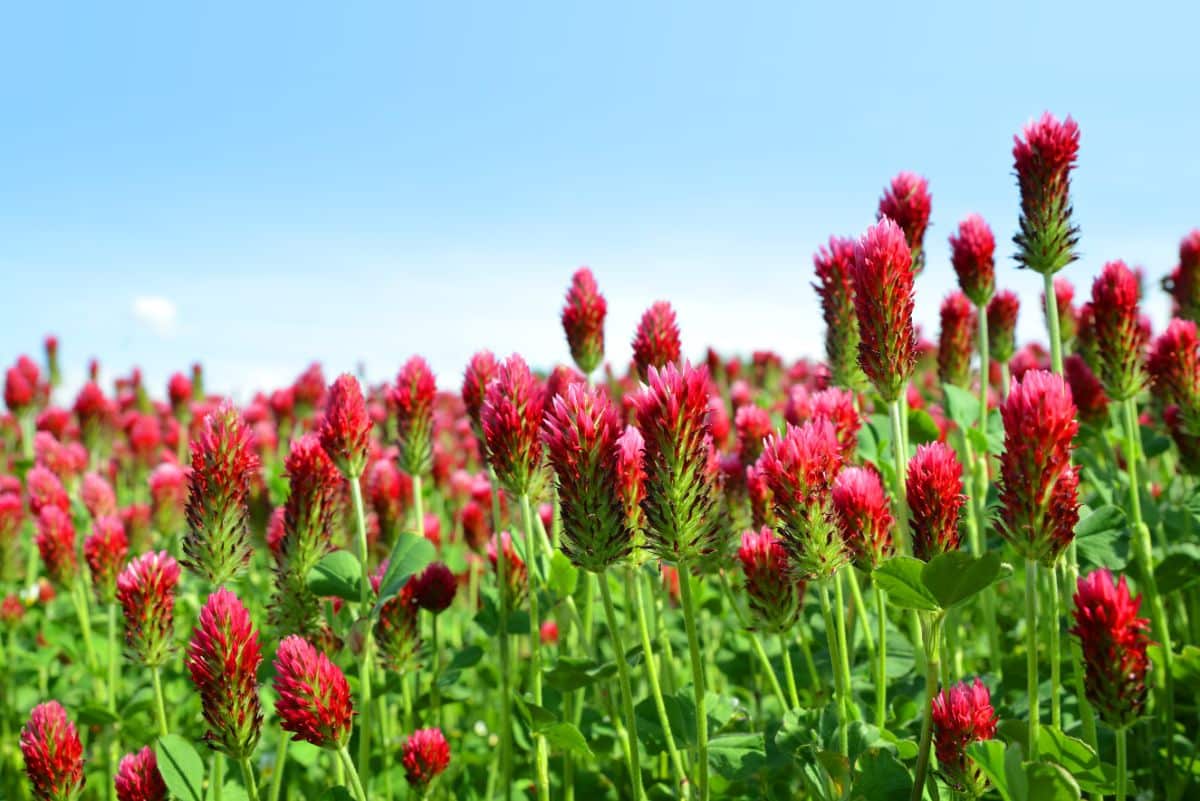
| Plant name: | Crimson clover |
| Light requirements: | Full sun to part shade |
| Water requirements: | Moderate |
| Winter killed? | Sometimes |
| Planting time? | 6 to 8 weeks before the first frost date |
Crimson clover is sometimes grown in lawns as a turf grass alternative, but this annual clover type is even more useful as a cover crop. Like other legumes, crimson clover is adept at fixing nitrogen into the soil, and its broad root system can also break up tough earth and make it easier for roots to penetrate. Not to mention, crimson clover is also one of the most attractive cover crops you can grow, and its deep crimson flower heads will add beauty to your garden even when your main crops aren’t growing!
When in bloom, crimson clover is highly attractive to bees and butterflies. If you’re keeping a pollinator garden, crimson clover may be the cover crop for you since it will add even more nectar and pollen-rich resources to your growing space. This plant is also usually winter-killed, and when the plants die back, they make a natural mulch that reduces erosion and weeds as well.
7. Canola (Brassica napus)
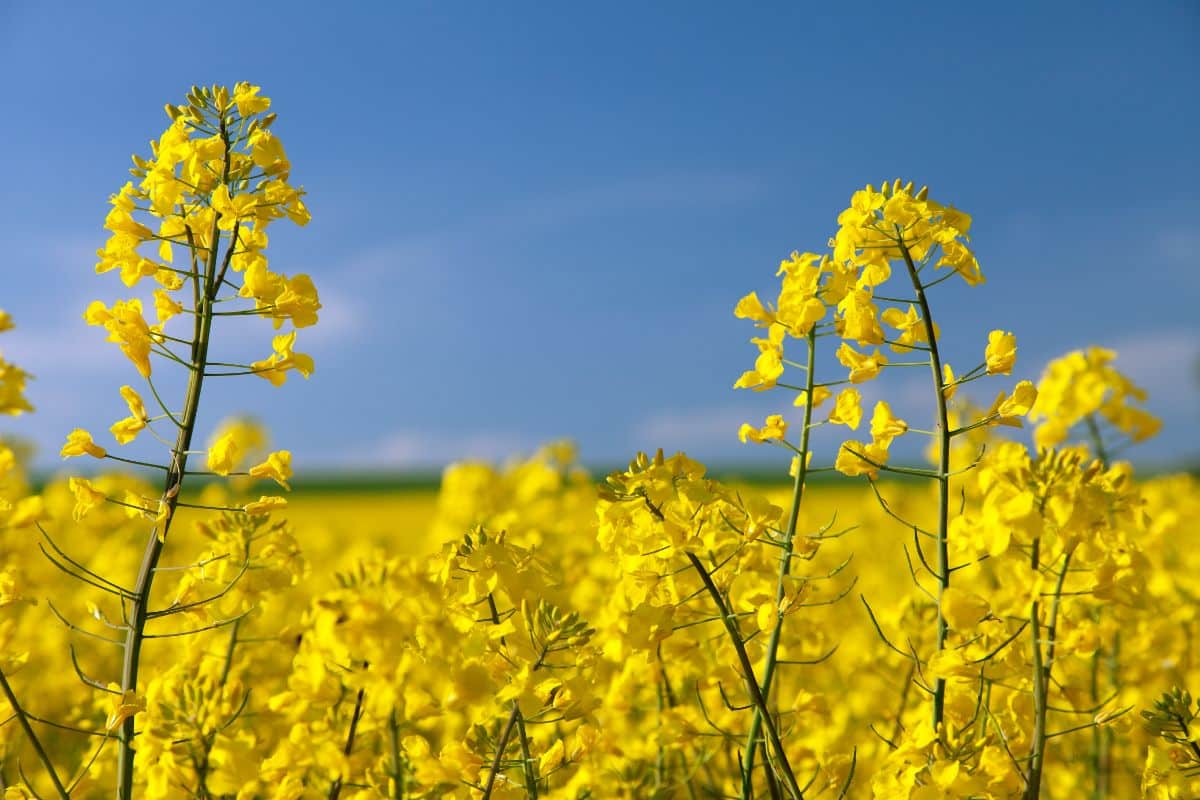
| Plant name: | Canola |
| Light requirements: | Full sun |
| Water requirements: | Moderate |
| Winter killed? | Sometimes |
| Planting time? | March or late summer to early autumn |
Canola is a type of brassica vegetable, but it’s mostly known as the key ingredient in canola oil and rapeseed oil. But canola can also be used as a cover crop in backyard gardens, where it excels at improving soil and limiting weeds. Canola plants are particularly rich in nitrogen, and tilling them into the soil at the end of the season will add much-needed nitrogen back into your garden and help next year’s crop grow even better.
Like many other brassica crops, canola plants have biofumigation properties, which have been shown to reduce soil-borne pathogens like Fusarium oxysporum, Rhizoctonia solani, and Sclerotinia sclerotiorum. If you’ve ever struggled with these diseases, planting a late-season crop of canola may help prevent fungal issues from overwintering. Beyond that, canola plants have allelopathic properties, which can also inhibit weed seeds from sprouting.
8. Vetch (Vicia villosa)
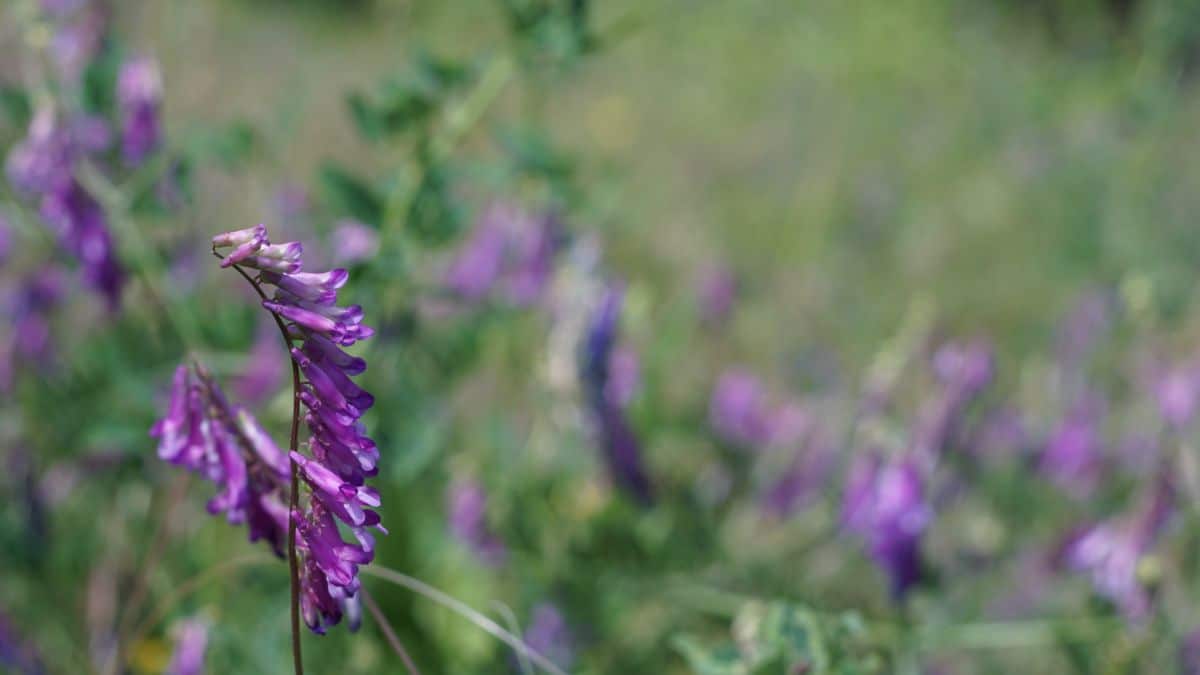
| Plant name: | Vetch |
| Light requirements: | Full sun |
| Water requirements: | Moderate |
| Winter killed? | Sometimes |
| Planting time? | Early spring or 4 to 6 weeks before the first frost date |
One of the absolute best plants for nitrogen fixation, vetch belongs to the legume family, and it’s commonly grown as a cover crop in backyard gardens and larger crop fields. This winter hardy plant has a lot of ornamental appeal, and its bright purple flowers are top nectar sources for honeybees and native bees too. This cover crop is often included in crop rotation cycles to replenish the earth after heavy feeding crops.
Aside from nitrogen fixation, vetch is ideal for controlling erosion, and it also helps soils absorb and retain water better. Additionally, because vetch is a taller cover crop, it can easily overshadow weed seeds and keep them from sprouting. Although vetch can grow beautifully with most plants, it’s best to avoid growing vetch immediately after other legume crops, as this can increase the chances that white mold, nematodes, or root rot will invade.
9. Rye (Secale cereale)
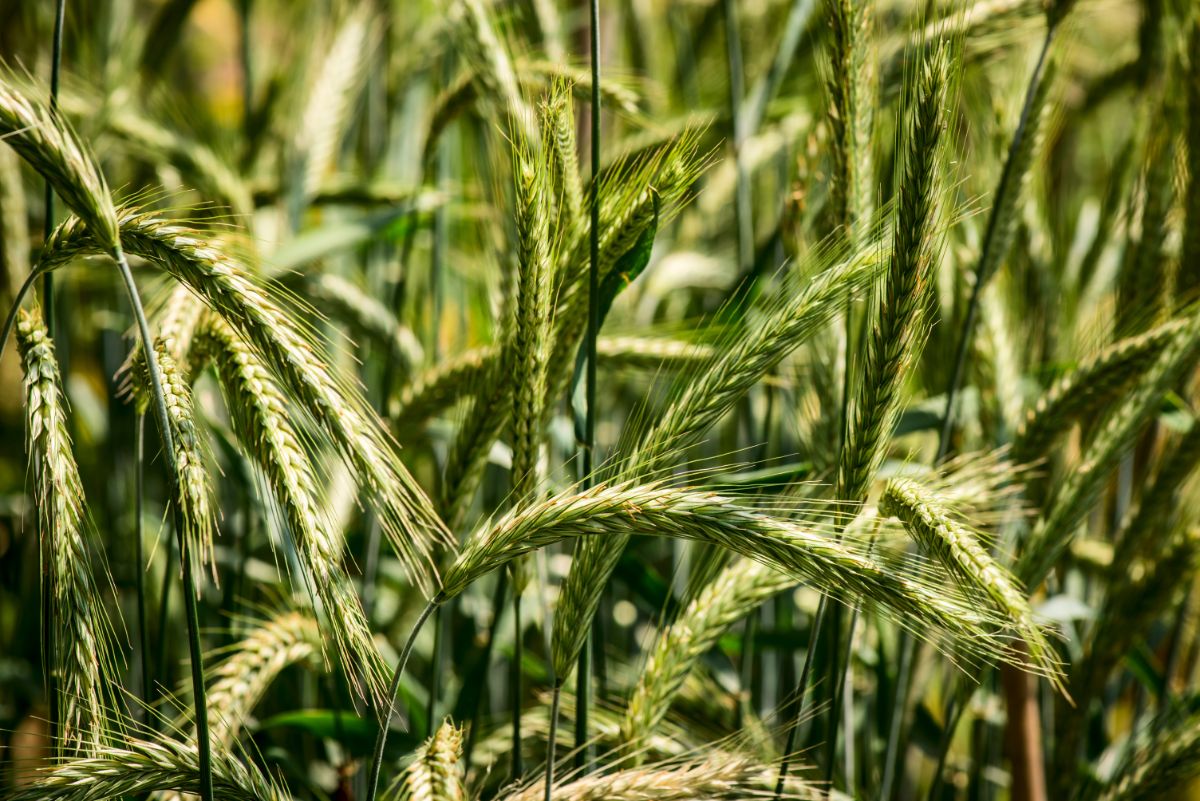
| Plant name: | Rye |
| Light requirements: | Full sun |
| Water requirements: | Moderate |
| Winter killed? | No |
| Planting time? | Early fall |
Rye is a popular edible grain that’s famously used in pumpernickel bread and rye bread, but this grass plant is also a soil-building cover crop. Rye plants have a mass of roots, which hold nitrogen in the soil and prevent nutrients from washing away in the rain. Rye plants also shield soil from erosion, and they block weeds as well.
When rye plants are tilled into the garden, they break down into garden beds and improve tilth and structure. Plus, rye plants are rich in nitrogen, so they can boost the growth of whatever crops you choose to grow next. While you can use rye on its own as a cover crop, you’ll get even more benefits if you grow rye and nitrogen-fixing legume cover crops together.
10. Alfalfa (Medicago sativa)

| Plant name: | Alfalfa |
| Light requirements: | Full sun |
| Water requirements: | Moderate |
| Winter killed? | No |
| Planting time? | August to early September |
Alfalfa is typically grown as food for livestock, but it also makes a wonderful cover crop for small and large garden spaces. Although beans and peas are most famous for being nitrogen fixers, alfalfa can fix nitrogen better than most other plants. This cover crop also helps balance other important soil nutrients, including magnesium, potassium, and phosphorous.
With an extensive root system that includes both shallow roots and a longer tap root, alfalfa plants can break up tough soils and increase water permeability in gardens. But as useful as alfalfa is, it may require a bit more work as a cover crop as this plant generally survives the winter. Tilling alfalfa crops under the soil in spring can prevent them from turning into weeds, and as the biomass breaks down, it will enliven your garden and feed your plant roots too!
11. Mustard (Brassica juncea)
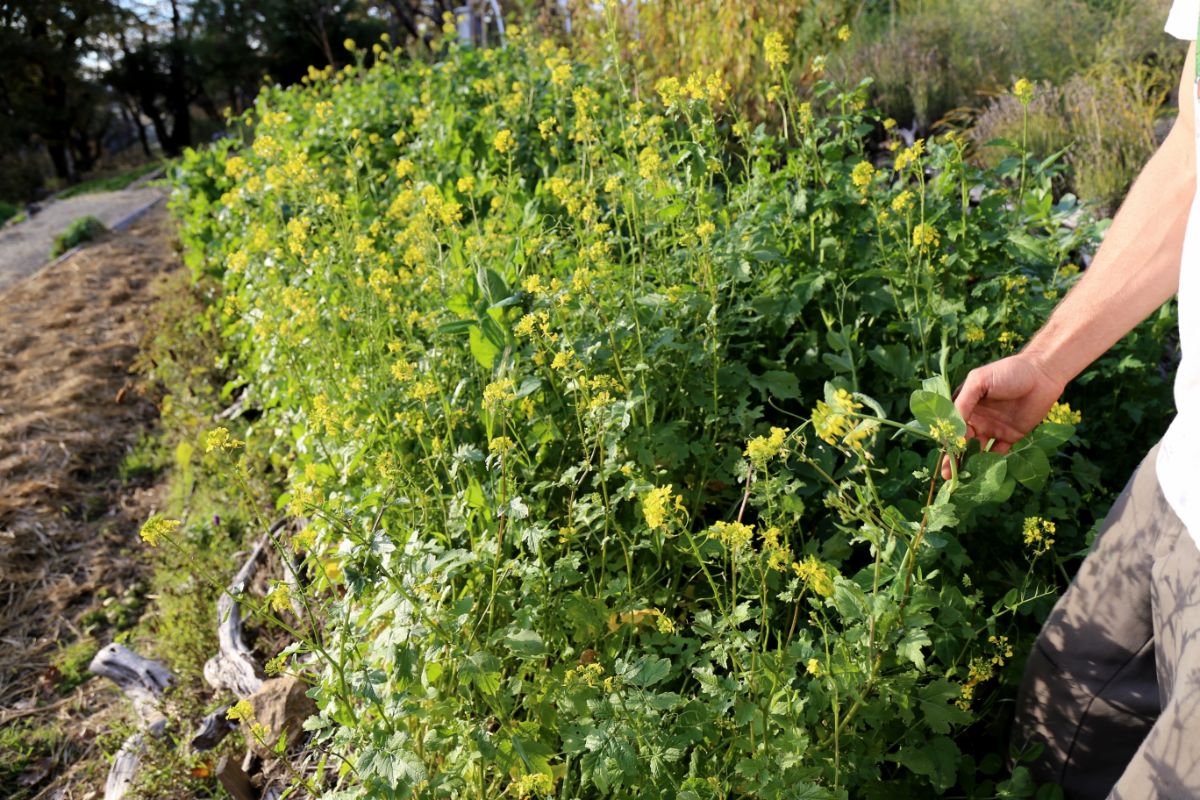
| Plant name: | Mustard |
| Light requirements: | Full sun to part shade |
| Water requirements: | Moderate |
| Winter killed? | Sometimes |
| Planting time? | Spring or fall |
Mustard plants are cool-weather vegetables that are typically grown in spring and autumn gardens. Harvested for their zesty and delicious leaves, mustard greens can be used to flavor salads and sandwiches, or they can be cooked into stir-fries, soups, and other dishes. But, of course, mustard is also a top cover crop for autumn gardens.
When planted in fall, mustard will grow well even in cool weather, but it will eventually be killed in winter. When spring arrives, mustard greens can be tilled into the soil, where they’ll enrich your beds and improve soil structure too. Many varieties of mustard can be used as cover crops, including white, brown, and black mustard.
On top of improving soil structure, mustard cover crops have biofumigant properties thanks to their high levels of glucosinolates. When tilled into the soil, mustard cover crops can help suppress common plant diseases, including blight and wilt. Mustard cover crops are also great for erosion control, and their allelopathic properties suppress weeds!
12. Fava beans (Vicia faba)
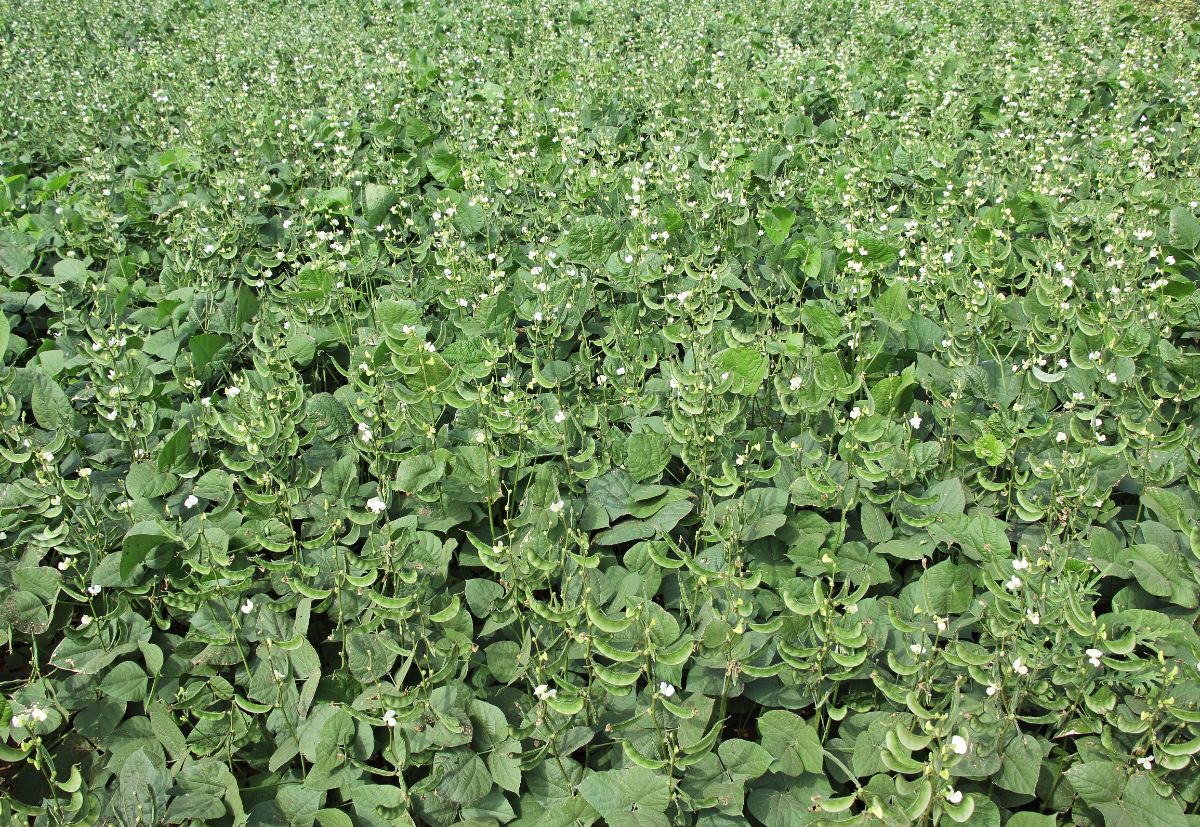
| Plant name: | Fava beans |
| Light requirements: | Full sun |
| Water requirements: | Moderate |
| Winter killed? | Yes |
| Planting time? | September to November |
Fava beans or broad beans can be grown as edible crops in vegetable gardens, but they can also be planted in spring or autumn as cover crops. These fast-growing plants produce a lot of biomass, which can be used as mulch or tilled into the soil. You can also gather fava bean plant debris and compost it to add extra nitrogen to your compost pile.
Because fava beans grow so large, they can suppress weeds and prevent erosion. These cover crops work particularly well with other vining cover crops, like vetch and field peas. And if you let the plants mature, you’ll also be able to supplement your grocery budget with some homegrown fresh beans!
13. Arugula (Eruca sativa)
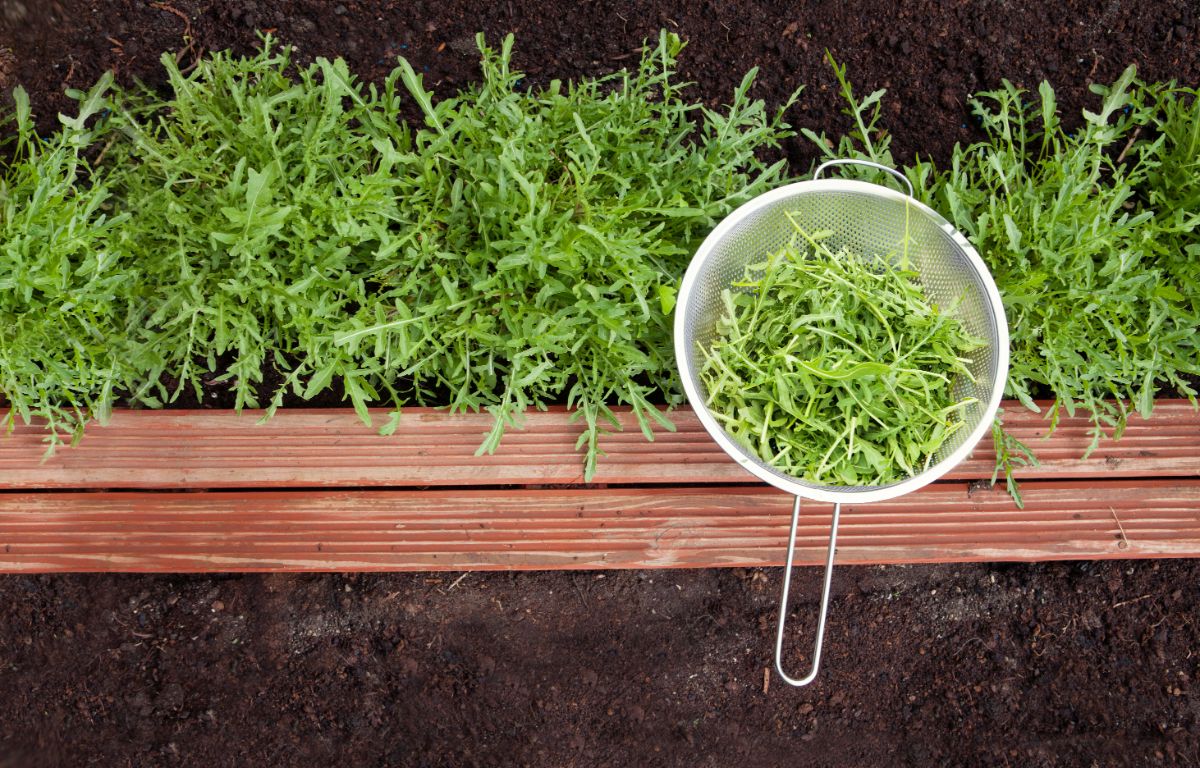
| Plant name: | Arugula |
| Light requirements: | Full sun to part shade |
| Water requirements: | Moderate |
| Winter killed? | Sometimes |
| Planting time? | Early spring or late summer to early fall |
Arugula is mostly grown as a salad green, and its peppery flavor is certain to spruce up any dish that it’s mixed into. However, arugula also makes a fantastic cover crop in vegetable gardens, where it can be used to improve the nutrient content and structure of soils, suppress soil-borne pathogens, and more. The best time to plant a cover crop of arugula is in late summer to fall, after you’ve pulled your harvestable vegetables out of your garden beds.
Since arugula is a relatively cold hardy green, you can harvest leaves from your arugula cover crop to add to late-season salads and other dishes. But when winter kills the rest of your arugula, you can till the dead foliage into the soil to add nutrients back into your garden and loosen up dense earth. Since arugula has biofumigation properties, arugula cover crops can also suppress soil-borne pathogens and nematodes.
14. Oats (Avena sativa)
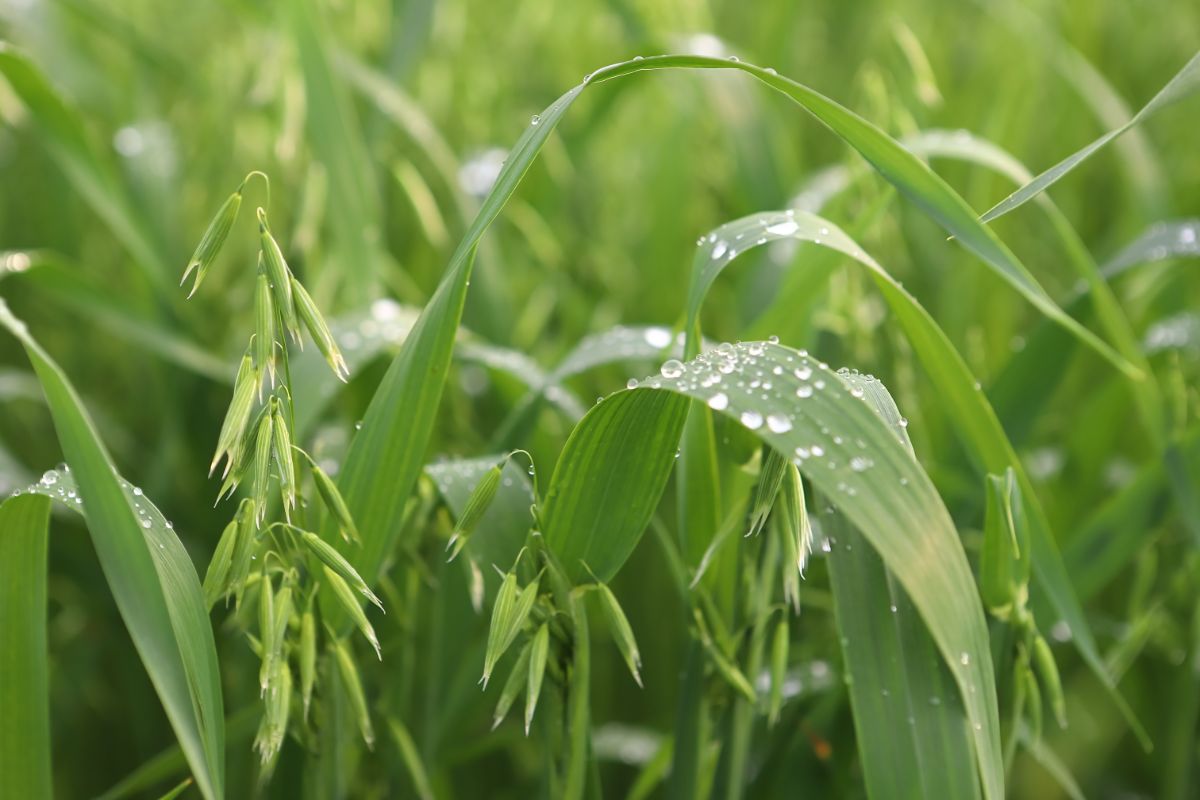
| Plant name: | Oats |
| Light requirements: | Full sun to part shade |
| Water requirements: | Moderate |
| Winter killed? | Yes |
| Planting time? | 6 to 10 weeks before the first frost date |
Oats may not offer as many benefits as some of the other cover crops on this list, but they’re still useful plants that can offer a lot to organic and conventional gardens. One perk of oats is that these plants are fast-growing, and they work beautifully for weed suppression when used in conjunction with rye and field peas. Oats can be planted either in spring or autumn, and planting oats at different times of the year can give you different results.
Spring-planted oats are fantastic green manure, and they can add nutrients to the soil when they’re tilled in. Autumn-planted oats, on the other hand, die back when winter arrives, but the plant mass acts as a thick mulch, shielding the soil from erosion and winter damage. In spring, old oat debris can be tilled into the soil too, which will enhance the soil’s nutrient content and structure.
15. Barley (Hordeum vulgare)
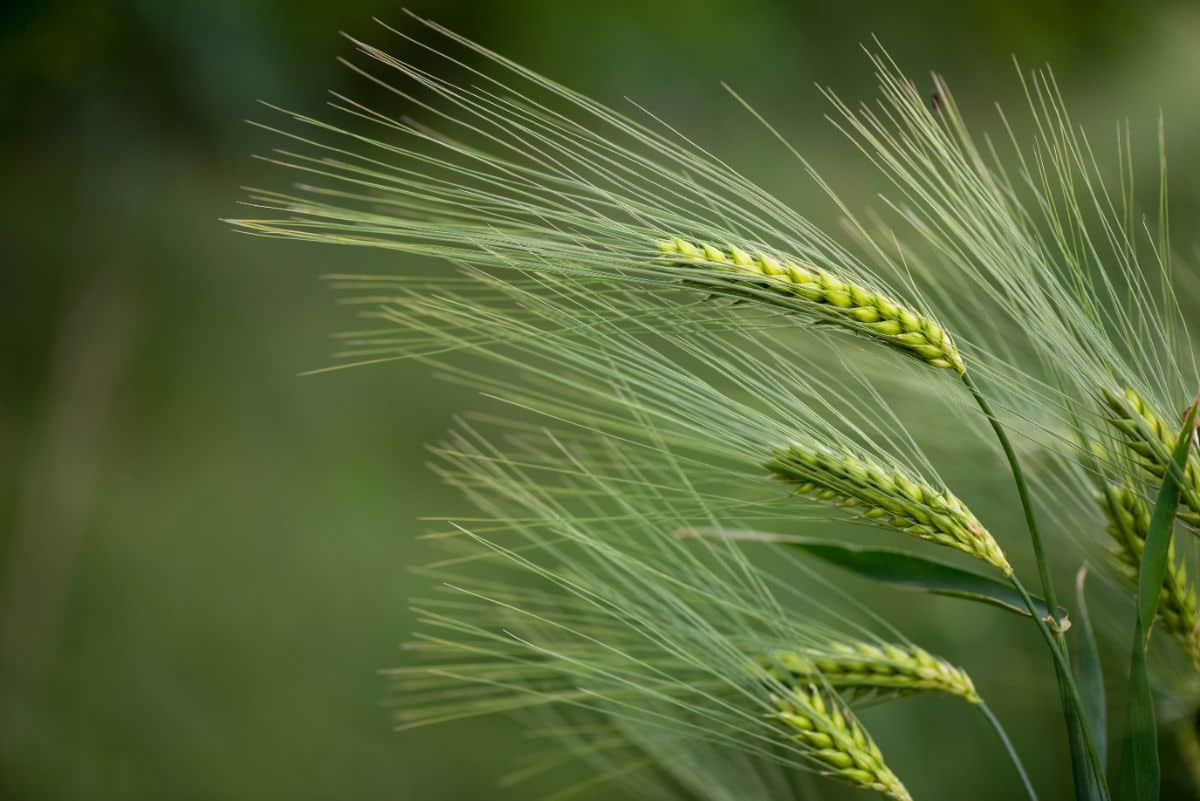
| Plant name: | Barley |
| Light requirements: | Full sun |
| Water requirements: | Moderate |
| Winter killed? | Sometimes |
| Planting time? | September to November |
Barley is another grass plant that’s eaten as a grain by both humans and livestock. But this fast-growing plant is also one of the best cover crops you can grow. With an upright growth habit and easygoing nature, barley can prevent weed seeds from creeping into your garden, and it has other benefits too.
Barley has a large, fibrous root system that helps hold soil in place and prevents erosion, even in hilly areas. What’s more, because barley grows so quickly, it produces more biomass than many other cover crops, which can be used for soil improvement or mulching. Barley plants also hold nitrogen in well, and they will act as a slow-release fertilizer when tilled into gardens.
Frequently asked questions
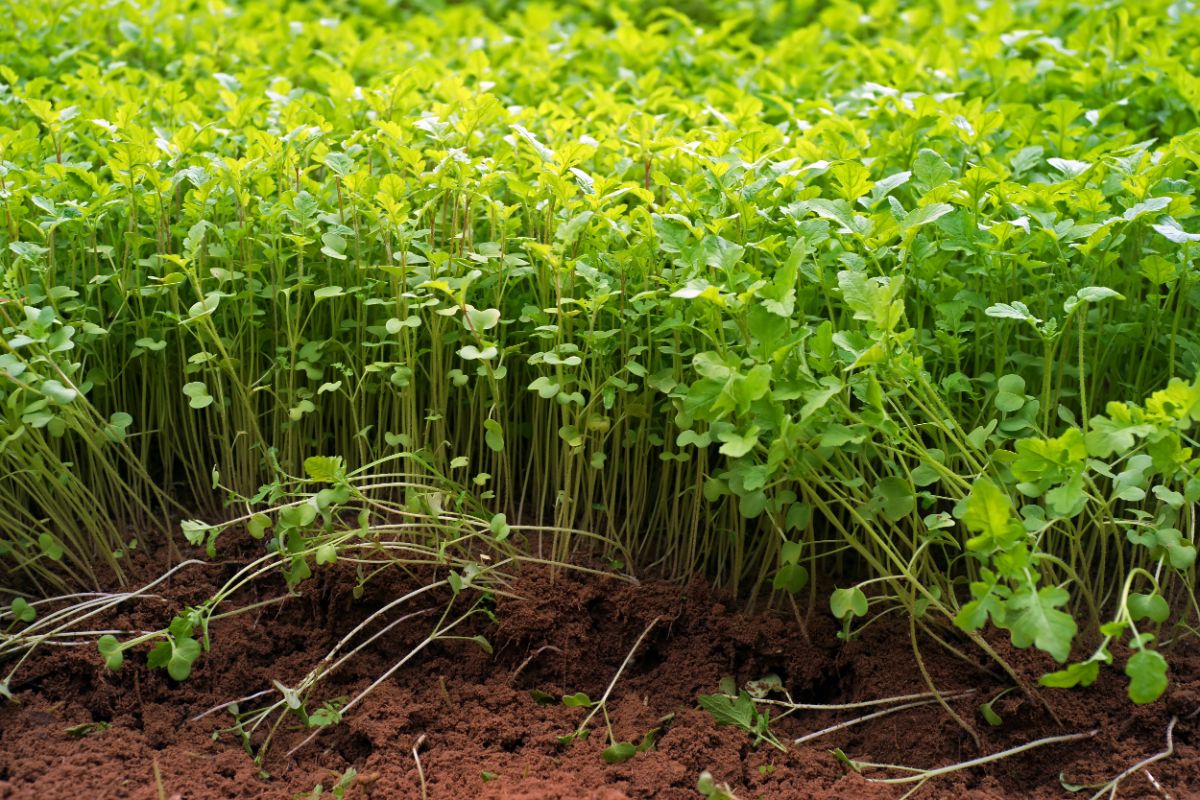
Cover crops are fast-growing crops that can be included as part of your crop rotation cycle or planted in spring or autumn after you’ve harvested the rest of your garden. When cover crops are tilled into the soil, they boost soil nutrient levels and improve soil structure as well. On top of that, cover crops can be used to prevent pests and pathogens, suppress weeds, and counter erosion.
Cover crops have a lot of benefits, but winter hardy cover crops can become weeds if you don’t till them into the soil at the right time of the year. Additionally, since cover crops need to be planted early enough in the season to allow them to grow before frost, they can reduce the amount of vegetables that you grow in your garden. Some gardeners may prefer to succession plant cold hardy veggies into autumn, while other gardeners may feel that they get more benefits out of cover cropping.
Some cover crop species are naturally killed in the winter, and they won’t come back as weeds. However, other cover crops will need to be cut down or tilled into the ground in spring before they go to seed to prevent them from becoming weedy.
No, cover crops are meant to die back in the fall, and then the remaining plant matter is tilled into the soil. But as some cover crops are edible, you can allow a portion of your cover crops to mature fully and harvest them if you want to.
Generally, most cover crops are planted in spring or in late summer to early fall. Timing is important as cover crops will need enough time to grow before autumn frosts arrive. That said, some cover crops, like barley, can be planted later in the season, depending on your first frost date.
No. While some cover crops, like vetch, are not native species, and they can grow vigorously and become naturalized, these plants are not invasive.
Summary
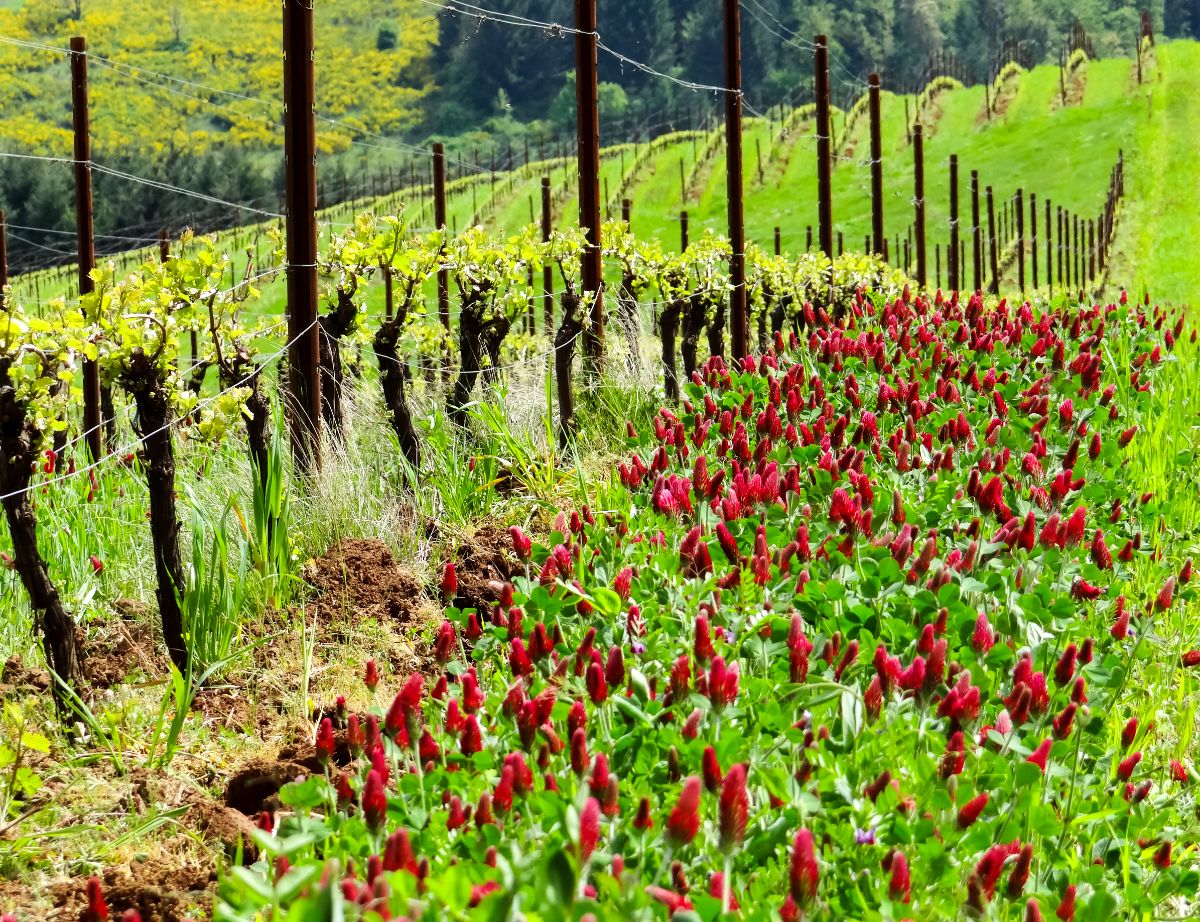
Using cover crops is an excellent way to improve the health of your soil, suppress weeds, reduce soil-borne pathogens and grow healthier plants overall. If you keep an organic garden, cover crops can reduce your need for chemical herbicides and synthetic fertilizers, and they can even improve the look and feel of your garden late in the season. While mulch can make gardens look tidy after you harvest your crops, cover crops are a living mulch that’s often cheaper than standard mulches, and their lush green leaves are even prettier to look at!
While cover crops will help you build your soil, there are other ways to enhance soil naturally. For more tips, check out our guide on how to use aged manure or compost for soil building.

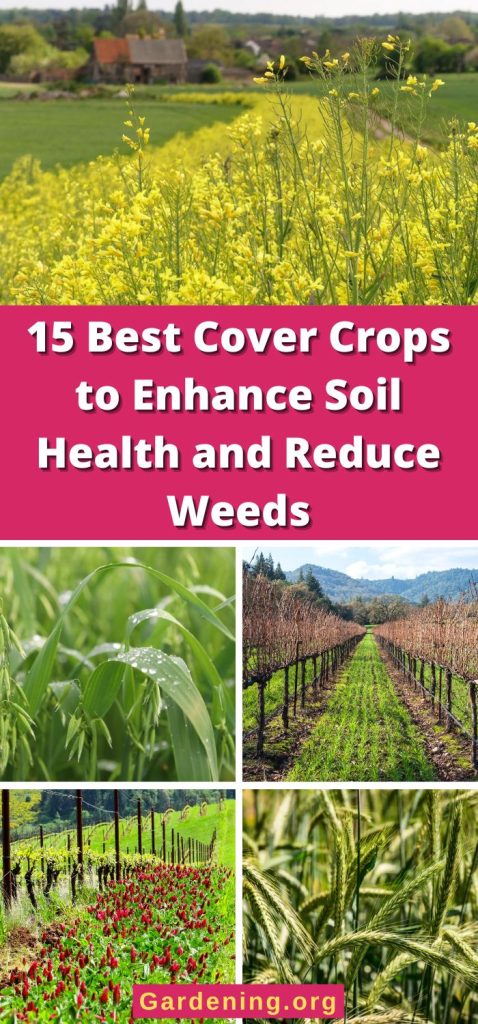
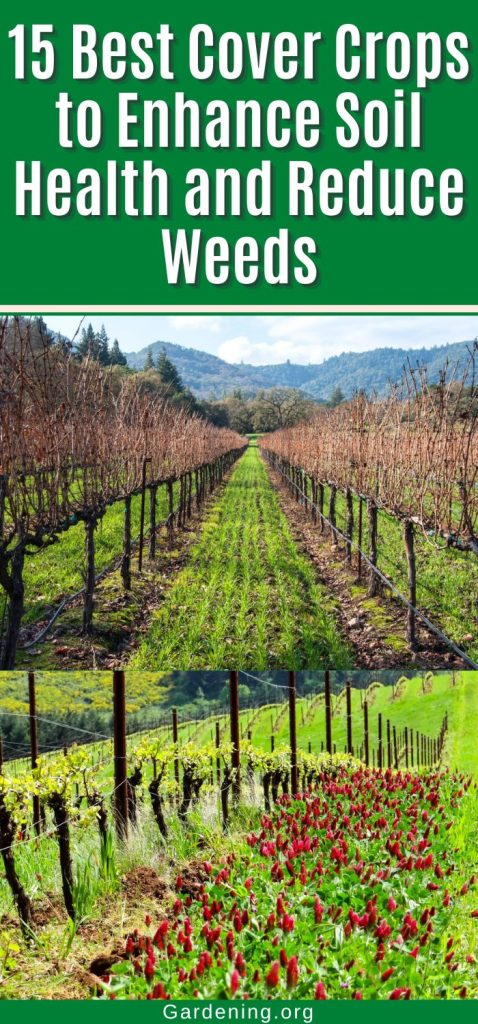
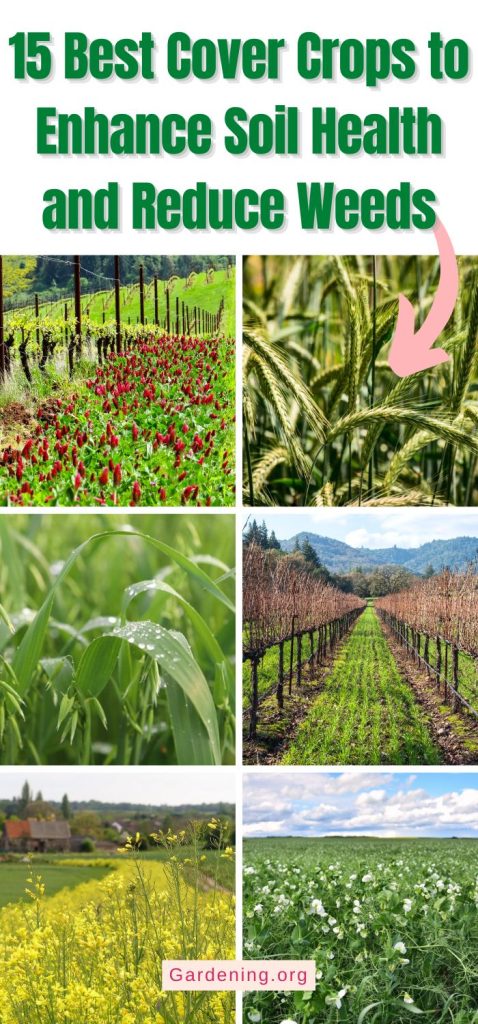
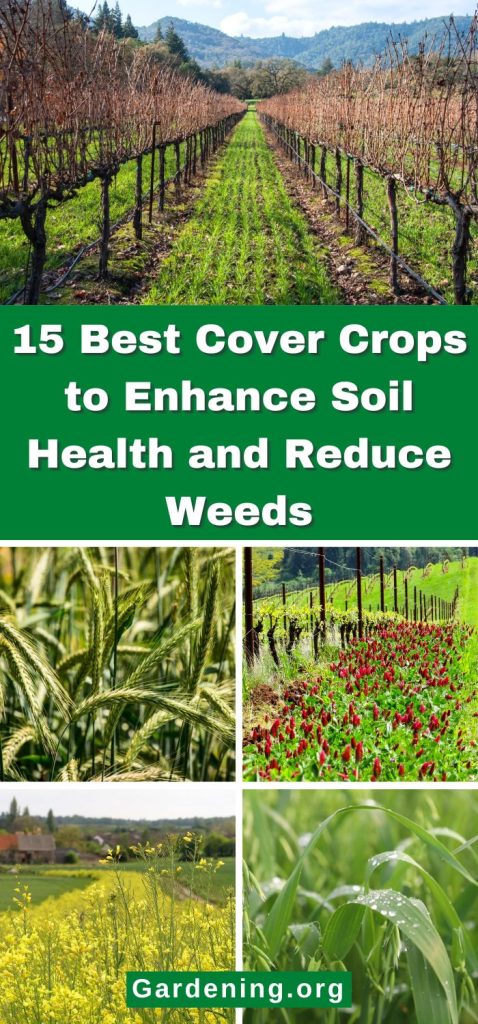




Leave a Reply